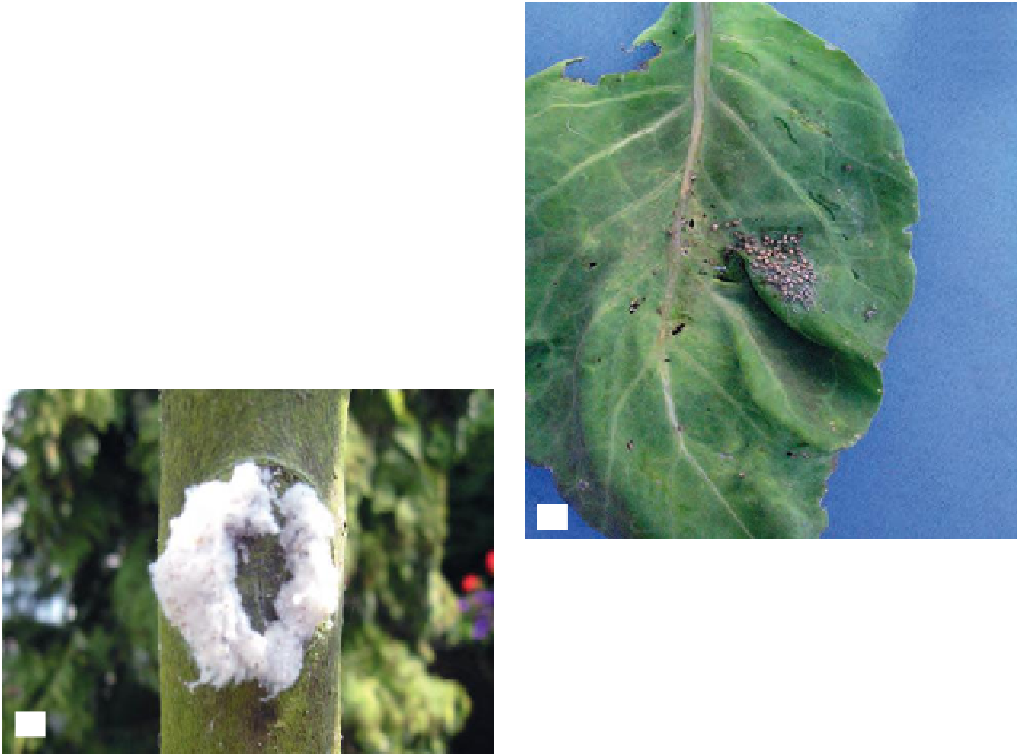Agriculture Reference
In-Depth Information
(a)
(c)
Figure 18.14
(a) Rose aphid; (b) apple woolly aphid; (c)
aphids become swollen and brown when parasitized
by a tiny
Aphidius
wasp
(b)
Spread
. This is mainly by introduced plants, or by
chance arrivals of adults through doors or vents.
Control
. This is achieved in several ways. Gardeners
should remove weeds in greenhouses, such as
chickweed or sow thistle that harbour the pest. Careful
inspection of the
lower
leaf surfaces of introduced
plants achieves a similar result. There is a reliable
form of
biological control
. This involves a minute
exotic
wasp
(
Encarsia formosa
) which is available for
purchase (see Figure 16.10b). It lays an egg inside
the last scale stage of the whitefly. The developing
whitefly is eaten away by the wasp grub and the scale
turns black and soon releases the next generation of
wasps (see p. 198 for more details). Control is usually
most effective if applied when whitefly numbers are
low. Some sprays used against other pests may kill the
wasp, if not carefully chosen. Gardeners can use spray
products containing specially formulated
fatty acids
to
control young and adult pest stages. If chemical control
is to be used, it is suggested that a serious infestation
of this pest receives a weekly chemical spray until
the pest is controlled. In this way, the more sensitive
young scales and adult stages are targeted as they
emerge from the thick-walled, resistant egg and scale
stages, respectively.
on the leaf surface. Plants that are seriously attacked
include fuchsias, cucumbers, chrysanthemums and
pelargoniums. Chickweed or sowthistle weeds in
greenhouses may harbour the pest over winter in all
stages of the pest's life cycle (see alternate hosts,
p. 194).
Life cycle
. The adult glasshouse whitefly is about
1 mm long, with white wings and white body. It is
able to fly from plant to plant. The fertilized female
lays about 200 tiny, white, rugby-ball-shaped eggs
in a circular pattern on the under-surface of the leaf
over a period of several weeks. After turning black,
the eggs hatch to produce nymphs (crawlers), which
soon become flat, immobile scales. The last scale
stage to develop is thick walled and is called a 'pupa'
(Figure 18.15a), from which the male or female adult
emerges. Three days later, the emerging female starts
to lay eggs again. The whole life cycle takes about 32
days in spring, and about 23 days in the summer. It
can be seen that a 200-fold increase in numbers every
month can quickly lead to a serious pest outbreak. The
skins of the egg and pupa stages are relatively thick
and these stages are more difficult to control with
insecticides.


